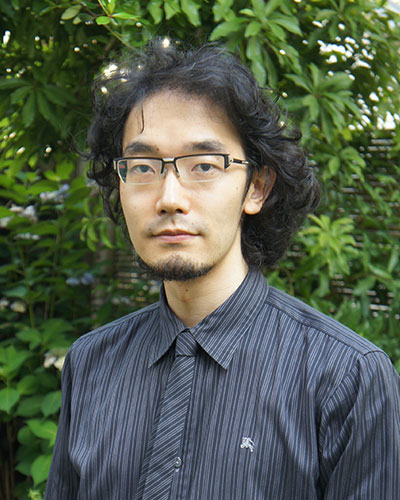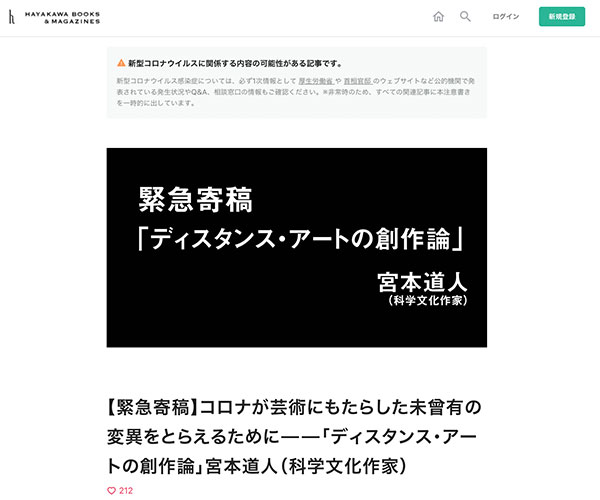Naming a group of works unique to the pandemic as “Distance Art”

What do UTokyo’s efforts made under activity restrictions reveal about the University’s direction in this new era?
In 2020, due to the pandemic, activities at UTokyo drastically changed in ways we had never expected. In this issue of Tansei, we record various efforts made at UTokyo over the past six months to offer a chance to think about the University’s activities in the COVID-19 era.
| UTokyo with Corona 7 |
Naming a group of works unique to the pandemic as “Distance Art”

Alumnus, Doctoral degree, Graduate School of Science
Science Culture Creator /
Researcher, Faculty of Engineering, Information and Systems at the University of Tsukuba
In the midst of the COVID-19 pandemic, new creative techniques have been emerging in the arts and entertainment fields. These include displaying multiple performances on a split screen, taking turns choosing the next performer to play music in a relay style, overlaying an original video of someone playing an instrument with your own musical performance, making a film using only Zoom footage, improvising in response to the viewer's directional commands shown on the screen, and making comedy out of situations such as freezing and lagging screens. It was Dohjin Miyamoto who captured this trend and named it “Distance Art” at the beginning of May 2020.
“The way of art had never changed in such a short period of time before. I thought it was important to analyze and verbalize it as soon as possible, so I wrote about it and published an article online (on the Hayakawa Publishing Corporation’s website). It's easier to understand a new culture if you put it into words, and in fact, the article received a fair number of responses.”
Distance is a concept that encompasses not only spatial distance, but also time disparities, psychological distance, linguistic gaps, social disparities and political differences. For example, the way young people in Hong Kong spread their pro-democracy message virtually in the Nintendo game “Animal Crossing” can be seen in this context.
“When I was a student at the Graduate School of Science, I studied the neural circuits of fruit flies while also writing about games and science fiction. By chance, I joined a community for science and technology studies, and that made me realize science is made of not only researchers but also interactions with society, including critics and people in public relations. I now call myself a ‘science culture creator’ in the sense that I'm creating a new culture of science through my writing.”
Miyamoto sees Distance Art as not a transient phenomenon, but rather something that will be an important part of the post-COVID-19 world. If the five million years during which humans learned to walk on two legs and expanded their range of activity from Africa are understood as the history of overcoming the distance of time and space, the next stage is beyond the sky.
“In the Space Age, the distance between time and space becomes more apparent. Without the development of Distance Art, human beings living in cramped spaceships would have no choice but to lead humdrum daily lives.”
Although life in space is still a long time away, more disasters such as infectious diseases, earthquakes, eruptions, floods and wars could continue to await in the future. The channel of Distance Art is inextricably linked to human potential.


* This article was originally printed in Tansei 41 (Japanese language only). All information in this article is as of September 2020.






